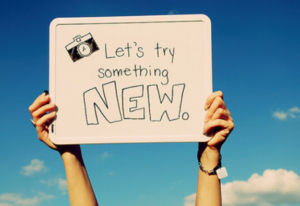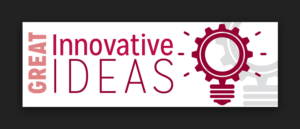Becoming obsolete is a reality in today’s fast-moving environment. Yes, today’s marketing needs require us to leave our comfort zone and venture into an environment that focuses on many Birchbox innovation ideas. Indeed, it is breakthrough innovations that are needed.
Here is a short video to help you with innovative marketing ideas.
In the classic TV show Dragnet, Sergeant Joe Friday famously admonished witnesses to give him “just the facts.” Generations of business executives have adopted the same approach, demanding substantiation rather than conjecture.
Many brilliant ideas come to people offline, in dreams, or in surprise moments when they’re not trying to figure things out. What happens is this: the conscious, problem-solving part of our mind hits a wall and gets stuck. That’s when the problem gets turned over to our subconscious mind. That’s how Elias Howe’s invention of the lock stitch the sewing machine happened.
That’s how Rene Descartes came up with the Scientific Method. And that’s what Seymour Cray, the inventor of the Cray Supercomputer, attributed his success to — the ability to walk away from a problem and let his subconscious mind do the work. Where and when do you get your best ideas away from work?
The problem is that the world is a confusing place and there are plenty of facts to go around. A quick Google search is all that is required to find the facts to support any argument. Studies conflict with other studies, contexts shift and the game goes on.
Yet even that far understates the problem. Even truths born out by rigorous analysis are often laid asunder by a rapidly changing world. Last year’s truths are often today’s red herrings. As rapid technological change transforms politics, culture, and economics, we need a new approach that is based less on false certainty and more on simulation.
Luckily, it doesn’t necessarily mean abandoning the principles we’ve learned along the way. It just means evolving our thinking and applying these same principles to the new mediums.
Here are ten areas of business change that will get the organization paying attention to where to find breakthrough innovation ideas for your marketing needs:
The arrival of channel convergence
All mediums are converging. The customer dictates the content they want to consume, across multiple mediums, the times they want it. On-demand mediums will challenge the marketer as consumers move swiftly between tablets to a smartphone to television.
The new ways of targeting customers across multiple platforms now allow the marketer more long-tail opportunities that will augment and support traditional targeting.
Data is the new norm
The promise of big data brings with it enormous benefits that can now inform customer preferences; identify relevant prospects in real-time; distill meaning from reams of information where it impacts competitive or brand reputation.
The opportunities to target more granularly beyond just “company”-collected transactions provide profound instances to find the right customer, at the right time, in the right channels, with the right message.
The need for strong data analysts to compile this information across multiple platforms and mediums will be an essential component to effectively target for acquisition; improve retention rates and optimize for real-time performance.
Change is imperative
Gone are the days of relying on historical data. These days, any data point longer than 30 days is too old and therefore, of limited value. No longer are we required (or should we be required) to sit and wait for results.
With data becoming more embedded in our daily work, marketers must work towards a more agile, near real-time environment:
This also means becoming more data responsive to an increasingly splintered market, having the structures and processes to change tactics on the fly.

It is the context
Google has gone beyond just keyword and now tries to extract real meaning from what people search or speak about.
Semantic algorithms go this one step further and now give marketers the tools to improve the understanding of what people need and want.
It’s here that will help predict and define areas the brand can connect and provide value to customers.
Always-on multi-channel presence
A more informed customer expects an optimal experience that “allows them to shop and receive their purchases where they want when they want and how they want.”
This means providing the ‘continuous experience’ across brands, devices, and format: mobile internet devices, computers, bricks-and-mortar, television, radio, direct mail, catalog, etc.
Today’s marketer is channel-agnostic and is aware of sites, platforms and channels the customer is researching, eliciting recommendations, price-comparing and ultimately, buying.
Value is the new currency
One of the hardest lessons for marketers to have learned is to refrain from leading with an overt company or product messages. “Leading with value” has become a difficult principle to adopt, after years of “me-me-me” communications.
Declining performance of digital ad units means marketers must rethink content from the position of the customer. The rise of the editorial as an essential function within marketing will be necessary to instill this new discipline.
Building sustainable relationships
The value of social media as an open channel two-way conversations now provides brands with the ability to not only build relationships but benefit from the effort and commitment to nurturing customer relationships through these channels.
Word of mouth and advocacy are strong indicators of brands doing it right.
The value of organic traffic that results from content value, social consistency, and customer commitment, will become more critical than the more costly campaign-driven ad-buys and promotions.
Social focus
Agencies will never be able to build effective community management services truly. This function needs to live within the heart of the organization. Customer relationships with brands cannot be fostered via surrogate means, and then adopted by the organization.
Only employees within the organization, with the proper knowledge and solutions, can effectively troubleshoot customer complaints and provide the right responses in the expected timeframe.
An emerging discipline in community /customer relationship management will be critical to gauge the pulse of the community and to bridge the gap with the organization.

Team organizational focus
The result of these changes will inevitably move away from marketing and become embedded in all parts of the organization.
A responsive, dynamic organization means that PR, HR, Product development, Inventory Management, Operations will need seamless communication channels to receive and disseminate information into a proper and outside the company to stakeholders as well as external customers.
Future marketers will become more operations-minded but will rely on the collective organization to function effectively.
Customer-centric is all there is
As digital media matures, the areas mentioned above will move companies to start to shift in ways that put the needs of the customers at the center of the organization.
One-to-one marketing will become a reality as data allows us to personalize experiences for each customer. Retention will get increasingly harder as mediums and platforms rise and fall with the nomadic consumer and Facebook and Twitter become less standard platforms.
Where critics have prophesied the death of marketing, a more responsive, dynamic and collaborative organization will take its place.
The bottom line
Marketing is no longer a discipline with best practices and tried and true techniques. As long as the technology exists, and media evolves, consumers will continue to find new ways to connect and consume information.
The truth is that innovation is never a single event. It requires the discovery of new insights, the engineering of solutions around those insights, and then the transformation of an industry or field. Technology does not produce progress by itself, we need to find important problems for it to solve and then must change how we work in order to take advantage of it.
So while smartphone apps are cool and add convenience to our lives, the real impact of digital technology lies in front of us, when second-order technologies are applied to completely new problems.
What’s clear is that these days our traditional definition of longevity is short-lived. Not only does the marketer need to morph with the times, but the organization also does as well.

